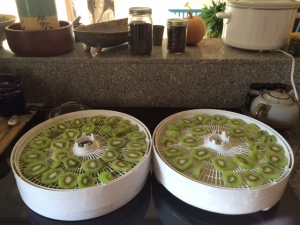For the past 15 years or so, I’ve been dealing with spring allergies in March and April. During the first couple of years, I thought I had a cold. But when I realized I went to the doctor over the same week in April with a cough and chest tightness, I realized it must be a reaction to pollen.
As the years went by, I would try various over the counter medicines with varying degrees of success in countering the congestion that would sneak up on me. I would be miserable for about 6 weeks, waking up tired and often cranky and irritable as the day wore on.
More recently I turned to “natural” products to alleviate my symptoms. I tried adding quercetin in my smoothies and flushed out my sinuses with salt water using a neti pot. These measures brought some relief but I was getting very tired of the routine and still feeling cruddy. I recall last April I was really feeling tired, wishing I had just left the area for a month to escape the offending particles.
As I drove to my blogging class with my friend last spring, she noticed how I was suffering and reminded me how important it is to make sure my adrenal glands are in good shape. At the time, I did take some herbs to support my adrenals but had not been very diligent about it.
Then as winter of 2014 arrived, I started thinking about how spring was around the corner and how I was dreading my birthday month (April) because that meant I would be tired and cranky for weeks. So I decided I would do two things: see an allergist about finding out what I was reacting to so I could pursue desensitization shots, and start taking herbs to support my adrenals at least three months before April.
In mid March, I visited an allergist. He tested me for many pollens and I did not react to any of them! I was a little disappointed. He said I was either allergic to something really unusual that he does not test for, or I have something called non-allergenic rhinitis, which was somehow related to my nervous system. I left the office thinking that I was going to have to continue the same old routine, using the neti pot and the herbal pills with quercetin and nettles.
Happily, something different happened this year. As the season progressed into late March, then mid April and past the dreaded April 20th mark, I noticed that I felt better than I had in 15 years. All that I was doing for allergies was taking my adrenal support herbs every day for several weeks as planned.
The supplement I’ve been taking is Adrenal Support Complete Care, by Innate Response. It contains Vitamin C, Pantothenate, Magnesium, Sensoril Ashwaganda (a special patented form of Ashwaganda), L-Serine, Rhodiola Extract, Holy Basil Leaf, Cordyceps Mushroom, Reishi Mushroom, Astragulus Root, Shisandra Berry.
There’s one other herb, hibiscus, that could play a part in this. I’ve drunk it as a tea twice a day for about six months. I have not heard that it helps allergies, but it is always possible it lowered inflammation in my body which in turn reduced my body’s response to pollen.
I’m relieved I’m feeling better this spring. I hope this information is helpful to you or someone else you know.

